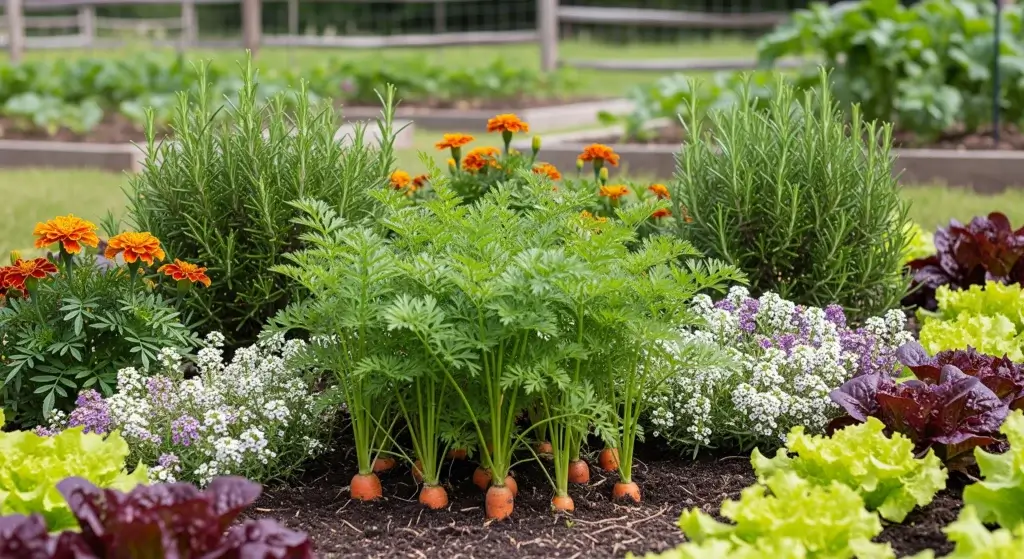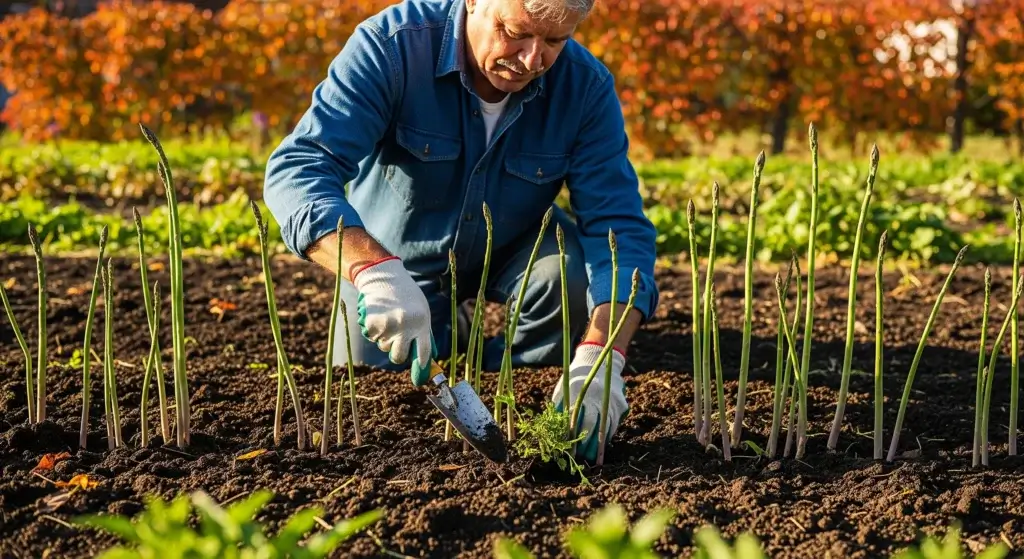
Companion planting is a time-tested gardening technique that involves growing different plants together to benefit one another.
When it comes to cucumbers, selecting the right companions can enhance growth, deter pests, and improve yields.
In this guide, we’ll explore the best companion plants for cucumbers, plants to avoid, and tips for successful companion planting.
By the end, you’ll have a well-rounded understanding of how to create a thriving garden with cucumbers and their best buddies.
Best Companion Plants for Cucumbers
Choosing the right companion plants for cucumbers can enhance their growth, improve soil health, and help ward off pests.
Here are some great options:
Radishes
Radishes are quick-growing plants that help break up compacted soil, making it easier for cucumber roots to spread and access nutrients.
They also serve as a natural deterrent to cucumber beetles, which can otherwise damage cucumber plants.
Tip: Plant radishes alongside cucumbers early in the season for best results in soil conditioning and pest control.
- Read also: A Complete Guide: Troubleshooting Common Cucumber Problems
- Read also: Building Upwards: A DIY Garden Trellis for Cucumbers Guide
Nasturtiums
Nasturtiums are not just pretty flowers; they are also functional companions for cucumbers.
These flowers attract aphids away from cucumbers, acting as a trap crop.
They improve cucumber flavor and help deter beetles and whiteflies.
Tip: Plant nasturtiums at the edges of your cucumber patch or intersperse them among cucumber plants to maximize their pest-repelling benefits.
Beans
Beans, especially pole beans, are nitrogen-fixing plants that enrich the soil with nitrogen—a vital nutrient for cucumber growth.
Their upright growth habit can also serve as a natural trellis for climbing cucumber vines, optimizing garden space.
Tip: Plant beans a few weeks before or alongside cucumbers, ensuring they have enough time to establish and start fixing nitrogen.
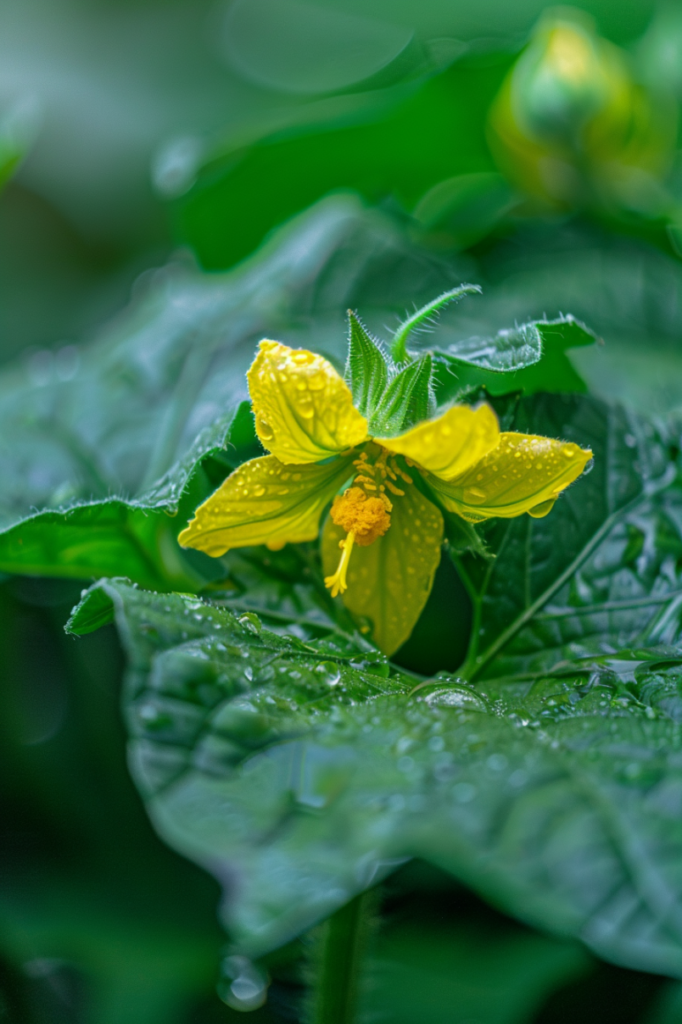
Marigolds
Marigolds are renowned for their ability to repel pests like nematodes, aphids, and beetles with their strong scent.
Planting marigolds around cucumber plants creates a natural barrier against harmful insects while adding vibrant color to your garden.
Tip: Choose French marigolds (Tagetes patula) for best pest-repelling effects and plant them in between rows of cucumbers or around the garden perimeter.
Dill
Dill attracts beneficial insects such as ladybugs, which prey on aphids and other pests that can harm cucumber plants.
It also enhances the flavor of cucumbers when planted nearby.
Tip: Plant dill slightly away from cucumbers to avoid attracting cucumber beetles, but close enough to benefit from its pest-controlling properties.
Sunflowers
Sunflowers provide natural shade for cucumber plants, helping to keep the soil cool and retain moisture—ideal conditions for cucumber growth.
Their tall stalks also offer support for climbing cucumber varieties.
Tip: Plant sunflowers on the north side of your cucumber patch to provide afternoon shade without overshadowing the cucumbers.
Lettuce
Lettuce grows quickly and can be harvested before cucumber plants spread, making it an excellent interim companion.
It acts as living mulch, suppressing weeds and conserving soil moisture for cucumbers.
Tip: Plant lettuce in rows between cucumber plants or in patches where cucumbers are yet to fill the space, maximizing garden efficiency.
Onions and garlic
Onions and garlic emit strong scents that deter many common garden pests, including aphids and beetles.
They take up minimal space and can be interplanted among cucumbers without competing for resources.
Tip: Plant onions and garlic around the perimeter of your cucumber patch or in between rows to create a protective barrier against pests.
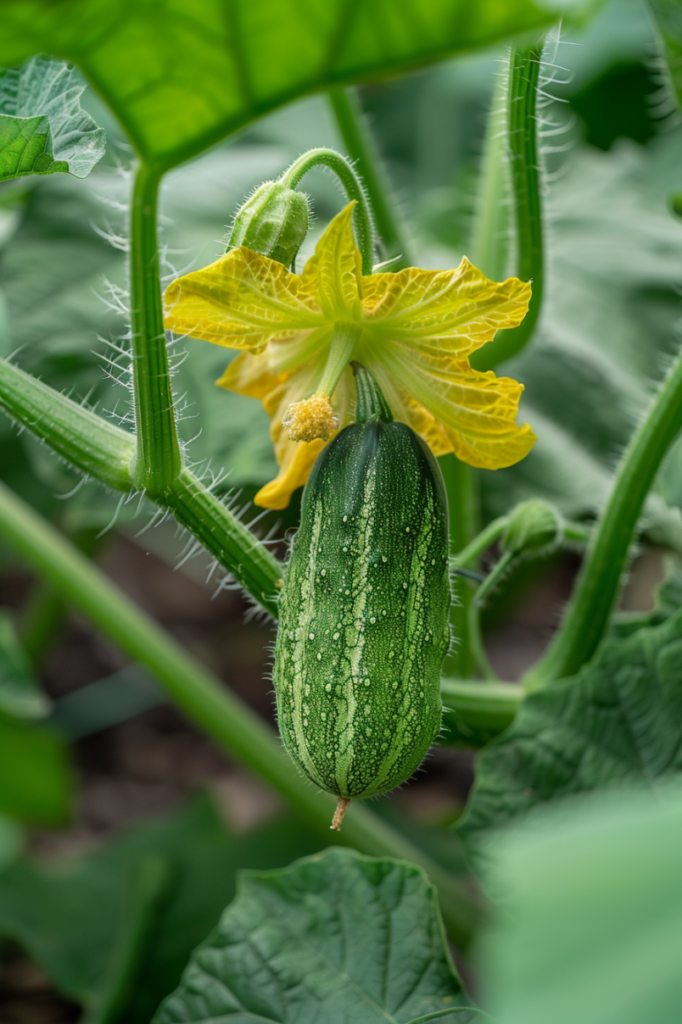
Plants to Avoid Planting with Cucumbers
When planning your garden, it’s important to consider which plants may not thrive well together.
Here are some plants that are not ideal companions for cucumbers and why:
Potatoes
Potatoes and cucumbers are both considered heavy feeders, meaning they require a lot of nutrients from the soil to grow well.
When planted together, they compete for these nutrients, which can lead to stunted growth and lower yields for both crops.
Additionally, they are susceptible to some of the same pests and diseases, such as aphids and certain fungal infections.
Planting them apart can help prevent these issues from spreading.
Sage
Sage is a strong herb known for its aromatic oils, which can have both beneficial and detrimental effects in the garden.
While sage can repel pests, its strong oils can also inhibit the growth of nearby plants, including cucumbers.
It’s recommended to plant sage in a separate area of the garden to avoid hindering the growth of your cucumber plants.
Melons
Melons, like cucumbers, belong to the Cucurbitaceae family.
While they may seem like natural companions, planting them together can lead to competition for nutrients and water.
Both crops require similar growing conditions and can attract the same pests and diseases, increasing the risk of problems spreading between them.
It’s best to space them apart to ensure each crop has sufficient resources for healthy growth.
Tomatoes
Tomatoes and cucumbers can grow together, but it’s not the ideal pairing.
Both plants are susceptible to similar fungal diseases, such as powdery mildew and blight, which can spread more easily when they are in close proximity.
They also have similar nutrient needs, leading to competition for resources in the soil.
To optimize growth and yield, consider planting tomatoes and cucumbers in different parts of your garden or in separate containers.
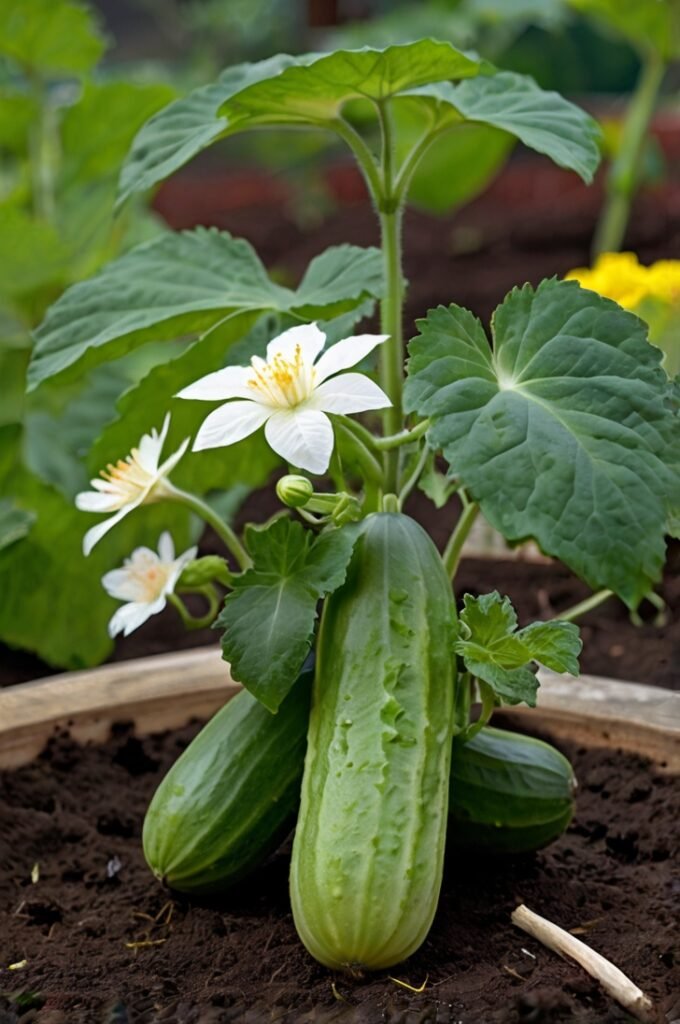
Tips for Successful Companion Planting with Cucumbers
Companion planting is an excellent way to enhance your cucumber garden.
Let’s dive into some essential tips to ensure your cucumber plants thrive alongside their companions.
Plan your garden layout
Before you start planting, take some time to map out your garden.
Think about the growth habits and sizes of your plants.
For example, tall plants like sunflowers can provide much-needed shade for cucumbers during hot summer days and act as a natural support for climbing varieties.
Ground covers like lettuce can help retain soil moisture, creating a cooler environment for cucumber roots.
Rotate crops
Crop rotation is a key practice in maintaining a healthy garden.
Avoid planting cucumbers in the same spot year after year.
This prevents soil depletion and reduces the risk of diseases.
By rotating cucumbers with other crops, you help maintain soil health and ensure that the nutrients are evenly used and replenished.
Monitor soil health
Cucumbers thrive in well-drained, fertile soil.
Regularly checking soil pH and nutrient levels is crucial.
If needed, amend the soil with compost and organic matter to improve its structure and fertility.
This not only benefits cucumbers but also helps their companion plants grow strong and healthy.
Provide adequate watering
While companion planting helps retain soil moisture, you still need to water your plants adequately.
Cucumbers require consistent moisture, especially during flowering and fruiting stages.
Using mulch can help retain moisture in the soil and reduce the frequency of watering.
This ensures that your cucumbers stay hydrated and healthy.
Use natural pest control
Encouraging beneficial insects like ladybugs and predatory wasps can help keep pests at bay.
Planting flowers such as marigolds and dill attracts these helpful insects, which naturally control pest populations.
This reduces the need for chemical pesticides and promotes a healthier garden ecosystem.
Prune and train plants
Regularly pruning cucumber plants improves air circulation and reduces the risk of fungal diseases.
Training cucumbers to climb on trellises or other supports saves space and makes harvesting easier.
This also helps prevent the spread of diseases and allows your plants to get more sunlight and airflow.
- Read also: Beat the Bugs: A Guide to Controlling Cucumber Beetles
- Read also: The Natural Weapon: Using Neem Oil For Cucumber Beetles
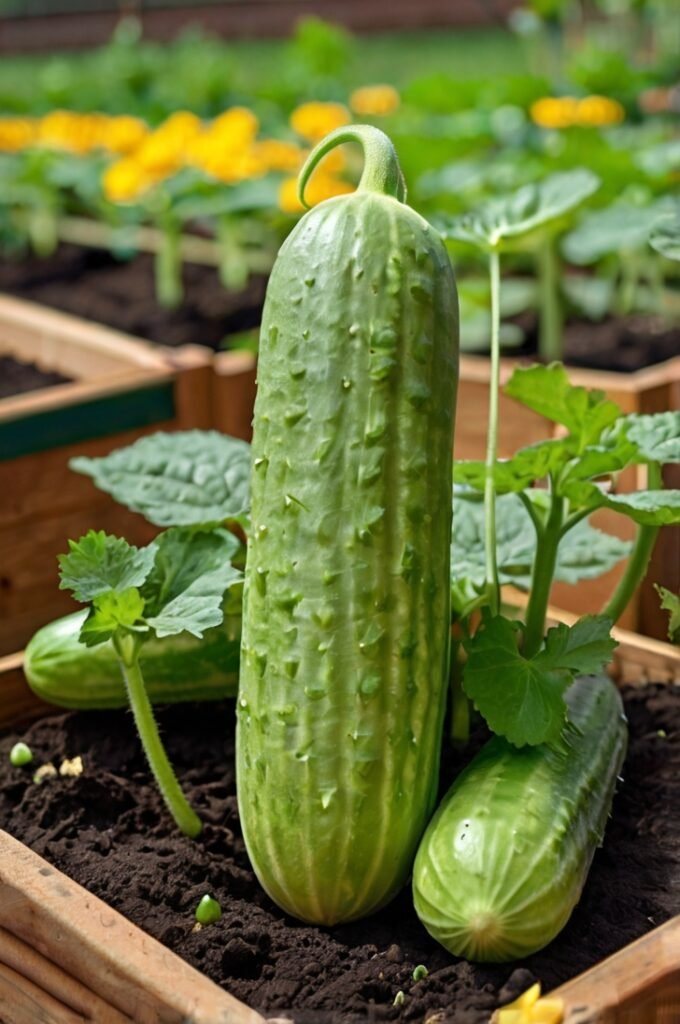
Conclusion
Companion planting is a smart and sustainable way to enhance the growth and health of your cucumber plants.
By choosing the right companions, avoiding incompatible plants, and following best practices for garden management, you can create a thriving ecosystem that benefits all your crops.
Happy gardening!


